Do you want to have an in-depth China escorted tour? Do you want to experience an interesting tour of Western China? If your answers are yes, you can have a look at this tour, which is a China escorted tour from Shanghai to Hong Kong. During this trip, you will go to Shanghai and enjoy the beautiful scenery of Shanghai and visit various interesting attractions there with the company of our local tour guide. Then you will go to Xining, Golmud, Nakchu, Lhasa, Gyangtse, and Shigatse to explore Western China. In these places, you will visit the splendid grasslands and experience the life of local residents. What’s more, we will arrange for you to visit some natural landscapes, where you can feel the grandeur of nature. Besides, you will have a Hong Kong escorted tour, besides arranged interesting escorted itineraries, you will have some free time, during which you can choose to visit the spots you are interested in or take a rest. So please do not wait anymore, come to connect and join us.

Today you will arrive in Shanghai, an international city in eastern China. Welcome to Shanghai. As soon as you arrive at the airport, our local tour guide will be waiting for you at the arrival hall, holding your name sign. Shanghai is the center of China’s international economy, finance, shipping, and technological innovation. As of 2019, it has 16 districts with a total area of 6340.5 square kilometers and a built-up area of 1,237.85 square kilometers. What’s more, it has a permanent population of 24,870,900 as of 2020. Along the way to the hotel, you will experience the prosperity of Shanghai. In the following days of your Shanghai escorted tour, China Tour Star will at your disposal all the time. If you have any questions, you can ask our tour guide anytime. You can look forward to your tour now.
Today your Shanghai escorted tour begins. After breakfast, you will go to Jing’an Temple in Jing’an District. According to legend, the history of Jing’an Temple can be traced back to the Three Kingdoms Period(220-280). As the oldest Buddhist temple in Shanghai, Jing’an Temple has a total construction area of 22,000 square meters. It consists of three main buildings: the Daxiong Hall, the Tianwang Hall, and the Sansheng Hall. When you visit Jing’an Temple, you will enter through its mountain gate first. Mountain gate means the front door of the temple. As most temples were in the mountains and forests in the past, People always call the front door of temples the mountain gate. Inside the temple, there is a Bell Tower, where a giant bell is hung on the second floor. The bell, with a diameter of 2.1 meters, is 3.3 meters high and weighs 7.3 tons. It is cast in bronze. You can come here to appreciate its magnificence.
After leaving Jing’an Temple, you will visit the Yu Garden (closed each Monday) in Fuyou Road, Huangpu District. Yu Garden was originally a private garden in the Ming Dynasty (1368-1644). As of now, it has a history of more than 400 years. What’s more, it covers an area of more than 20,000 square meters (about 5 acres). In 1559, the owner of the garden, Pan Yunduan, a government official, started to build garden on the vegetable fields on the west side of his residence. After more than 20 years of painstaking management, Yu Garden was built. The main building here is Sansui Hall, which was built in the Qing Dynasty (1636-1912). Formerly known as “Leshou Hall”, it was renamed “Sansui Hall”, both of which imply auspicious meanings. As a spacious hall, it was the place where the host received guests. And in the Qing Dynasty, it was a place for official celebrations and gatherings of the local gentry.
After a hearty lunch, you will go to Shanghai World Financial Center, the first stop in the afternoon. Located in Pudong New District, Shanghai World Financial Center is a skyscraper in Lujiazui Financial and Trade Zone. Covering an area of 14,400 square meters, it has 101 floors above ground and 3 floors underground. The sightseeing hall, located on the 100th of Shanghai World Financial Center, is 472 meters high. It is a 55-meter-long suspended sightseeing corridor. When walking on this sightseeing corridor with transparent glass floor, you will have a special experience. Here you can see the spire of the Oriental Pearl Tower, which is 468 meters high. And you can also see that the Shanghai Jinmao Tower is at your feet.
After visiting Shanghai World Financial Center, you will go to the Bund, the second stop in the afternoon. The Bund, located on the west bank of the Huangpu River (the mother river of Shanghai) in Huangpu District, is a Chinese historical and cultural area. It starts from Yan’an East Road in the south and reaches the Waibaidu Bridge over the Suzhou River in the north, with a total length of 1.5 kilometers. After Shanghai became a commercial port, foreign banks, associations, and newspaper offices began to gather here. Since then, the Bund has become the financial center of China and even the Far East. In the 20th century, due to the development of technology and economy, multi-story and high-rise buildings appeared on the Bund. It has various styles such as British classical, French classical style, and Baroque style. There are a total of 33 buildings on the Bund, some of which are still rented by some organizations. For example, the Bund No.1 is now the headquarters of China Pacific Insurance Company. It was built in 1913 and was an office established in Shanghai by the British Merchant Asia Oil Company. It is known as “the tallest building on the Bund”, whose bottom and upper sections are in Baroque style. You can come here to appreciate diverse buildings.
Then you will go to the last stop, Nanjing Road, the first commercial street established in Shanghai after Shanghai became a port opening to the world. Nanjing Road, with a length of 1,033 meters, is a paradise for shopping lovers. Moreover, Century Square, which covers an area of 8,404 square meters, also stands here. There is a stage in the middle of Century Square, which can hold large-scale events and activities such as performances and merchandise displays. And on its west side, there is the green space, covering nearly 400 square meters. As you go to Nanjing Road, you can buy some local special products here. For example, you can buy some savory moon cakes with pork filling (a Chinese bakery product traditionally eaten during the Mid-Autumn Festival) from Shen Dacheng, which was founded in 1875, with a history of more than 140 years. You can also go to Zhang Xiaoquan, a time-honored brand of scissors. Zhang Xiaoquan became famous in 1628.

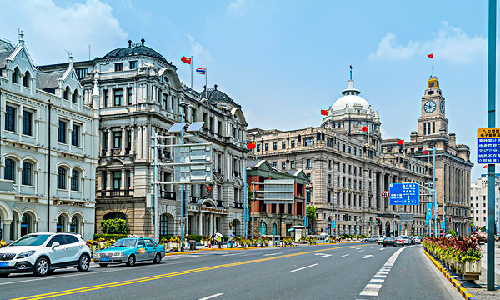
 Xining
Xining Today your Shanghai escorted tour will be over. You will go to a new city to start your tour. After breakfast, you can return to your room to pack your luggage. Then you will be transferred to the airport. You will take the estimated flight MU9925 10:50/14:35 to Xining in northwestern China. Xining, the capital of Qinghai Province, covers an area of 7660 square kilometers. When you arrive at the airport, our tour guide in Xining will be waiting for you. And then you will go to the hotel to have a good rest.
 Qinghai Lake
Qinghai Lake After breakfast, you will start your tour in Xining. We will drive 28 kilometers southwest to Ta’er Monastery, the first stop, in Huangzhong District. After a 30-minute drive, you will get to this tourist attraction. Ta’er Monastery, which was built in 1379, is the activity center of Tibetan Buddhism in northwestern China. It enjoys a high reputation in China and Southeast Asia. Since its establishment, it has gradually perfected its organization of the temple. In addition, Ta’er Monastery regularly organizes temple fairs. The temple fair is not only a good opportunity for the monks to study the scriptures, but also a time for them to entertain. Whenever there is a temple fair, the temple is lit up with lanterns. During the temple fair, there are live sermons by respected masters, which attract countless devotees to visit. Devotees also make offerings to the monastery these days, and these offerings are the main source of financial support for the monastery. In addition to this, Buddhist dances are performed by monks on the days of the temple fair. If you are lucky enough and your visit coincides with a temple fair, your China tour will be more interesting.
After going sightseeing in Ta’er Monastery, you will go to the second stop, Qinghai Lake in northeastern Qinghai-Tibet Plateau. After a 2.5-hour drive, you will get there, about 153 kilometers west of Ta’er Monastery. Qinghai Lake is the largest saltwater lake in inland China and an important part of maintaining the ecological balance in the northeastern part of the Qinghai-Tibet Plateau. It is 105 kilometers long, 63 kilometers wide and 3196 meters above sea level. There is a legend in Qinghai Lake. More than 1,000 years ago, the princess of the Tang Dynasty (618-907) married the King of Tubo Kingdom (633-842), Songtsen Gampo. Before leaving, Li Shimin, the second emperor of the Tang Dynasty gave the princess a precious mirror that could capture the scene of her hometown. On the way, Princess Wencheng missed her hometown, so she took out this mirror. After she saw the long-lost hometown, Chang’an (now Xi’an), she burst into tears. However, she suddenly remembered her mission to guild the friendship between the Tang Dynasty and the Tubo Kingdom, so she resolutely threw this precious mirror. When this mirror landed, a golden light flashed. Then the mirror turned into Qinghai Lake.
After visiting Qinghai Lake, your tour today will come to an end. In the evening, you will be transferred to the hotel near Qinghai Lake. All you need to do is to have a good rest, so you will be energetic the next day.
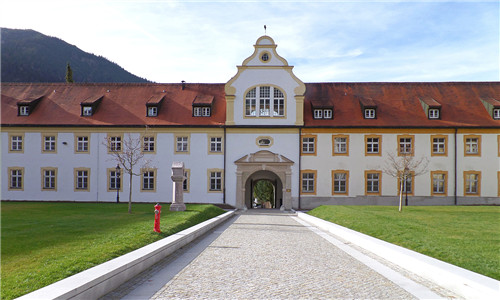
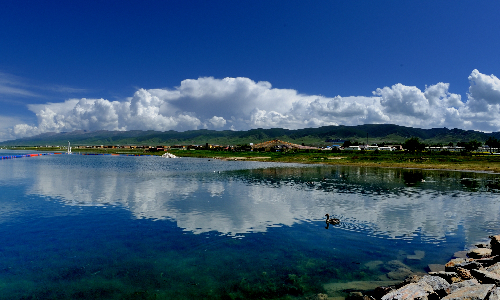
 Golmud
Golmud Driving 680 kilometers west and we will get to Golmud today. The whole trip will take us about 7.5 hours, so you can take some snacks with you. Besides, although it is a long journey, you will see various beautiful scenery, for example, grassland, herds, gobi desert, and so on.
 Tuotuo River
Tuotuo River In the morning, we will drive to Tuotuo River. From Golmud to Tuotuo River, we need to drive southwest for about 7.5 hours, about 430 kilometers. Tuotuo River originates from the glaciers on the main peak of the Tanggula Mountains and is the source of the Yangtze River. There are about 2,165 lakes in the basin of Tuotuo River, with a total area of more than 300 square kilometers. When driving by, you will be amazed by the roaring waves of Tuotuo River. What’s more, your tour guide will take you to visit the First Bridge of the Yangtze River. The bridge is 1389.6 meters long. On one side of the bridge stands a monument, which says “The Source of the Yangtze River”.
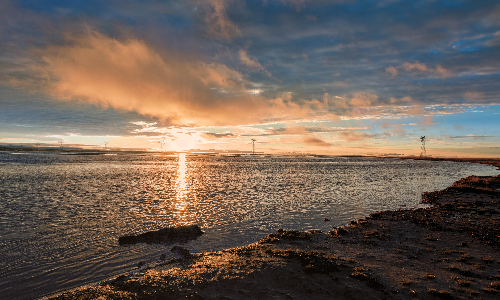

 Nakchu
Nakchu Today, from Tuotuo River, we will drive about 420 kilometers south to Nakchu, which will take about 8 hours. During the journey, you will visit the pass of Tanggula Mountain. Tanggula is the dividing line between Qinghai and Tibet. The pass is 5,231 meters above sea level. Standing there, you will have a broad vision. Then, after arriving at Nakchu, you will go to the hotel and check in.
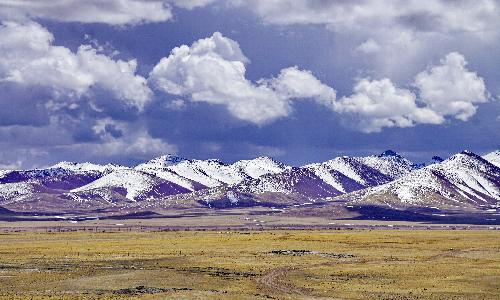

 Lhasa
Lhasa Today, your tour guide will transfer you to Lhasa. From Nakchu to Lhasa, we will drive south about 334 kilometers, which will take about 4 hours. Besides, during the journey, you will visit Namtso Lake and Yangpachen Geothermal Energy with the company of your tour guide.
Namtso Lake, located in the central part of the Tibet Autonomous Region, is the highest saltwater lake in the world, which is 4,718 meters above sea level. What’s more, it is also the largest lake in Tibet and one of the holy places of Buddhism. Every year, it attracts lots of Buddhists to seek the transcendence of the soul by walking around the lake. The soul of everyone who has been to Namtso Lake seems to be washed by pure lake water. Standing by Namtso Lake, the world’s tallest and most beautiful lake, you will have a feel of being in a blue world.
Leaving Namtso Lake, you will visit Yangpachen Geothermal Hot Spring. The crustal movement not only created the roof of the world, but also the geothermal resources. Yangpachen Geothermal Hot Spring is located in the basin next to the Nyainqentanglha Mountain, covering an area of about 7000 square meters. On both sides are towering snow-capped mountains and glaciers. The hot spring water here is from the ground up all year round, and it is surrounded by steaming mist for a radius of 40 kilometers, which is quite spectacular.
After sightseeing, you will be transferred to the downtown of Lhasa. Covering an area of 82.8 square kilometers, Lhasa has a population of about 860,000. And it is a famous and beautiful tourist city in China. After arrival, you will be transferred to the hotel to have a good rest. Tomorrow, your Tibet escorted tour will begin.
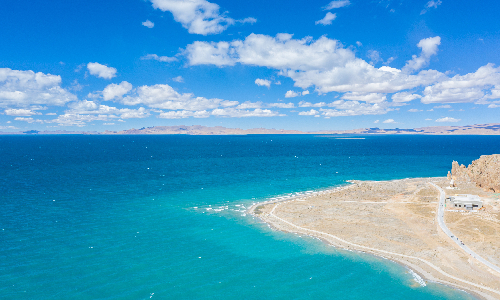

Today, you will go to visit the Potala Palace first. Located in the center of Lhasa, it covers an area of 360,000 square meters. What’s more, its altitude is about 3,700 meters, making it the highest ancient palace in the world. It is composed of White Palace and Red Palace. Red Palace is located at the center while White Palace sits beside it. It was built at the beginning of the seventh century. The original Potala Palace was destroyed. What people see today is the architecture originally rebuilt in the Qing Dynasty (1636-1912), and it is the result of the continuous expansion since the 17th century.
Then, after lunch, you will visit Jokhang Temple, located in the center of the old city of Lhasa. Jokhang Temple has a history of 1350 years. It is the most magnificent building of the Tubo Kingdom in Tibet. Since the temple was built in 647 AD, it has undergone many expansions, covering an area of more than 25,100 square meters now. In Lhasa, the locals also like to call the Barkhor Street area around the Jokhang Temple “Lhasa”, which means the place of the Buddha in Tibetan. You may also see worshipers kowtowing at the entrance of Jokhang Temple. You will feel the devotion of the locals to Buddhism here.
Stepping out of Jokhang Temple, you will visit Barkhor Street next. Barkhor Street is located in the old city of Lhasa. It completely preserves the traditional appearance of the ancient city. The original street of Barkhor Street was just a circumanbulation around Jokhang Temple, and Tibetans called it the “Holy Road”. Now, Barkhor Street becomes the most prosperous commercial street in Lhasa around Jokhang Temple. There are many restaurants, shops, hotels, and handicraft workshops on Barkhor Street. Many people who go to Tibet will choose to come here for shopping. So if you want to buy some souvenirs, it is a good place to go. Besides, there is an interesting custom: the Tibetan stallholders will give a discount to the first buyer and the last buyer every day, and use the money collected from the first buyer to tap the goods on the stall a few times to pray for fortune and treasure.

After breakfast, you will visit Tibet Museum (closed each Monday). Completed in 1999, it covers an area of more than 50,000 square meters. Tibet Museum is the first museum with modern features in Tibet. It also has distinctive features of traditional Tibetan architecture. On the central axis is the preface hall, the main exhibition hall, and the cultural relics warehouse. There are prefaces in Tibetan, Chinese, and English in the niche of the preface hall. The exhibition hall is composed of four parts: prehistoric culture, indivisible history, culture and art, as well as folk culture. There are various collections for you to visit.
In the afternoon, you will go to Sera Monastery. Sera Monastery is one of the six main monasteries of the Gelug Sect of Tibetan Buddhism. It is located at the foot of Selawuzi Mountain, on the northern outskirts of Lhasa. One of the famous attractions of Sera Monastery is Hayagriva Buddha Statue. It is said that shortly after the completion of Sera Monastery, a master passed by here. His robe was hooked by the bushes here several times. Later, he saw a red bird flying and hiding in the bushes. The sound of the bird attracted a horse in the distance to run to the bushes. According to Buddhism, it is s sign of auspiciousness, so the master built the Hayagriva Buddha Statue, of which the head resembles a horse’s head.
Next, you will visit Norbulingka Park, located in the western suburbs of Lhasa. It means “Baby Park” in Tibetan. It is the largest man-made garden in Tibet with the best scenery and most historic sites. There are many kinds of plants in the garden, many of which are rare. Some are exotic flowers taken from the foot of the Himalayas, and there are also rare flowers transplanted from the inland or imported from abroad. The park can be called a plateau botanical garden.
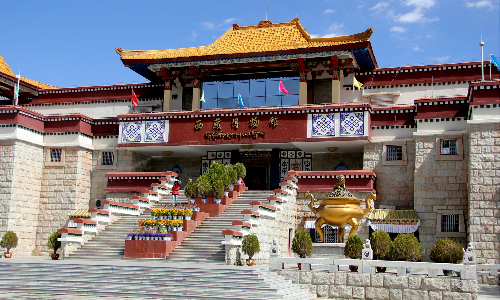

 Gyangtse
Gyangtse Today you will be driven to Gyangtse. We will drive about 270 kilometers southwest. This long journey will take you about 5 hours. You can take some snacks with you, so that you will not be hungry during the trip. Besides, along the trip, you will visit Yamdrok Yumtso Lake. In Tibetan, its name means the lake of swans. Yamdrok Yumso Lake, Namtso Lake and Mapang Yumco Lake are known as the three holy lakes in Tibet. The deepest point of Yamdrok Yumtso Lake is 60 meters. It is the largest inland lake at the northern foot of the Himalayas. Although with an attitude of about 4,400 meters, it will not freeze even in winter because of plenty of sunlight. It is said that Yamdrok Yumtso Lake was transformed by a fairy who went down to the mortal world. A long time ago, this place was just a small pond. And there lived a wealthy family nearby, and there was a servant in the house was called Dawa. One day Dawa rescued a little goldfish around the pond. The little goldfish became a beautiful girl and gave Dawa a treasure. After his master knew that, he asked Dawa to take him to the pond to find the treasure and the goldfish. Failure to find both, the master drowned Dawa into the pond. At this time the goldfish appeared and turned into an endless wave to hit the rich. The master was killed for being evil, and from then on, a huge lake was formed here, and that is Yamdrok Yumtso Lake.
After visiting Yamdrok Yumtso Lake, you will return to Gyangtse. And then you will be escorted to the hotel to have a good rest.
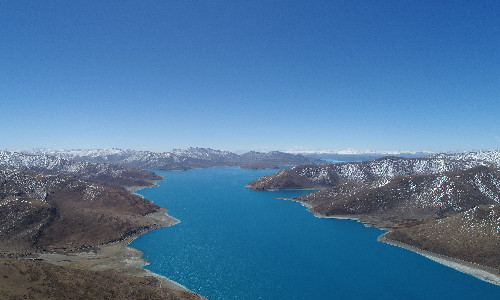
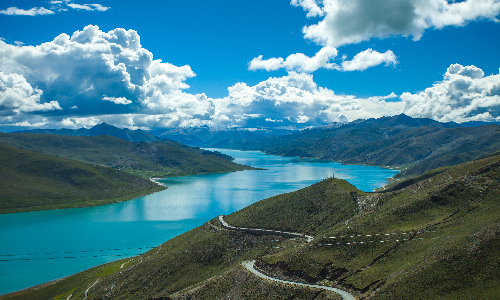
 Shigatse
Shigatse After breakfast, you will visit Pelkor Monastery first. Located in Gyangze, it is surrounded by mountains and rivers. It is about 3,900 meters above sea level. Pelkor Monastery was built in 1427, and took 10 years to complete. It is a typical Tibetan Buddhist monastery architecture, combined with pagodas and temple halls. The temple halls and pagodas blend naturally and complement each other.
Then, you will leave Pelkor Monastery for Shigatse, which is about 95 kilometers away from Pelkor Monastery. Then we will drive northwest for about 2 hours to get there.
After arrival, you will visit Tashilunpo Monastery. It is located on the slope of Niseri Mountain in the west of Shigatse City. With an area of nearly 150,000 square meters, it is the largest monastery of the Gelug Sect of Tibetan Buddhism in Shigatse. This monastery was first built in the Ming Dynasty (1368-1644) to house the gilt bronze statue of Sakyamuni. The whole monastery was built on a large scale, and was extended many times. On the road far from Shigatse, you can see Tashilhunpo Monastery in the distance, with its golden dome shining under the sun.

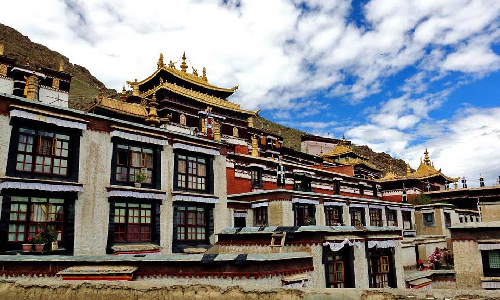
 Lhasa
Lhasa Today you will return to Lhasa from Shigatse. The driver will drive about 270 kilometers east, which will take you about 4.5 hours. Besides, during the trip, you will visit a local Tibetan family, so you will learn some local costumes. You will also have the opportunity to taste local food, like buttered tea and zanba (roasted highland barley flour cake).
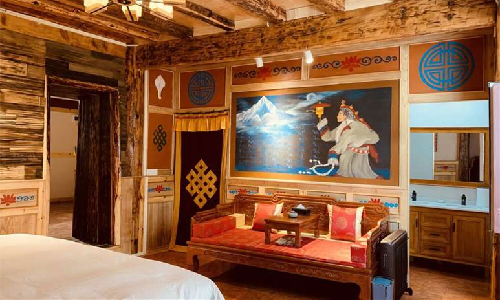

 Chengdu
Chengdu Today, your trip to Lhasa is over, and your tour guide will send you to the airport. You will take the estimated flight CA4402 10:15/12:20 to Chengdu. In Chengdu, your tour guide will wait for you in advance, and all you need to do is to follow your tour guide to the hotel and have a good rest.
Today, you will begin your China escorted tour to Chengdu. As an escorted tour, your tour guide will accompany you during the whole trip. At first, you will go to the Chengdu Research Base of Giant Panda Breeding. It is a scientific research institution of giant panda breeding, and completely simulates the wild for giant pandas. It has built lakes, streams, bamboo forests, lawns, etc., and breeds more than 100 giant pandas. There is the Giant Panda Museum near the gate. Inside the museum, there is a post office, where you can post postcards with panda postmarks. One of the famous attractions is Adult Giant Panda Enclosure, where adult pandas live and where you can see pandas playing, eating, and sleeping. There are open-air gardens and indoor lounges. When the weather is cool, the giant pandas will play in the garden. Visitors can watch the cute giant pandas standing out of the railings. When it becomes hot, the giant pandas will hide in the air-conditioned lounge. At that time, you can only watch them through the glass.
After visiting lovely pandas, you will go to Du Fu Thatched Cottage next. It is the former residence of the great poet, Du Fu, in the Tang Dynasty when he lived in Chengdu. Du Fu lived here for nearly four years and composed more than 240 poems. If you want to know more about the great poet, you just need to step into Du Fu Thatched Cottage. Inside, there is Imitated Thatched Cottage. The government restored Thatched Cottage in 1997 based on the description of Du’s poems, recreating the pastoral style of the poet’s former residence and creating a strong poetic atmosphere.
Then you will have a hearty lunch. And then, in the afternoon, you will go to Chengdu Wuhou Shrine Museum. It is the only ancestral temple in China where the monarch and minister were enshrined together. It is also the most prestigious memorial site for Zhuge Liang (a minister), Liu Bei (the emperor), and other heroes of the Shu Han Dynasty (221-263). The gate of Chengdu Wuhou Shrine Museum has a plaque “Han Zhaolie Temple” in regular script. “Han” refers to the Shu Han Dynasty. After Liu Bei’s death, he was named “Emperor Zhaolie”, indicating that this is a temple dedicated to Liu Bei. But people call it Chengdu Wuhou Shrine Museum because Zhuge Liang was named Wuhou (a noble title) after his death. This shows Zhuge Liang’s high prestige.
Then, you will go to visit Jinli Street. Jinli Street is adjacent to Chengdu Wuhou Shrine Museum. It was once one of the oldest and busiest commercial streets in the history of the Shu Han Dynasty. It had been famous throughout the country as early as the Qin Dynasty(221BC-207BC) and the Three Kingdoms Period(220AD-280AD). Now Jinli Street has developed into a folk-custom commercial pedestrian street. There are teahouses, inns, restaurants, bars, stages, snack bars, handicraft shops, and so on, which fully demonstrate the unique charm of the culture and folklore of Chengdu. More importantly, you can taste a variety of local delicacies there.

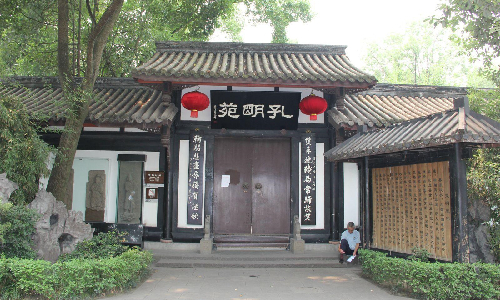
 Guilin
Guilin Today, you will leave Chengdu for Guilin. You will be sent to the airport and then take the estimated flight CA4764 11:20/13:05. In Guilin, your tour guide will wait for you in advance and then take you to the hotel, where you can have a good rest.
After breakfast, we will drive southwest for about 40 minutes (18KM) to Mopanshan Wharf. After arrival, you will take the Li River Cruise from Guilin to Yangshuo, which will take about 4 hours. You will see the most beautiful section of the Li River on the cruise ship. Taking the cruise is the best way to enjoy the beauty of the Li River. The first famous attraction is Nine Horses Painting Mountain. This famous mountain is distinctly different from other mountains along the river, with a wide white cliff and 9 horse patterns formed by the nature. Another attraction is the Yellow Cloth Shoal. Depending on the water level, there are different levels of shallows throughout the year here. The patterns on the banknotes of the 20 Yuan are the Yellow Cloth Shoal. If you have 20 Yuan, you can compare it with the landscape here and take a photo. What’s more, you will have lunch on the cruise ship.
Then, in the afternoon, you will visit Yangshuo West Street. With a length of nearly 800 meters, the buildings on both sides of the street still retain the Qing Dynasty’s(1636-1912) architectural style. Yangshuo West Street is a pedestrian street, mainly for leisure and vacation. It attracts thousands of visitors from home and abroad everyday. You may see a large gathering of people with various skin colors here.
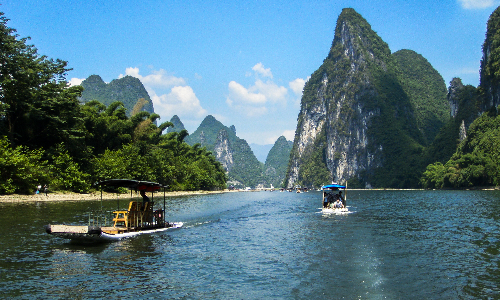

 Hong Kong
Hong Kong Today, you will leave Guilin. You will take the estimated train G319 12:38/15:57 to Hong Kong. In Hong Kong, your new tour guide will wait for you at the train station in advance. Located in southern China, the area of Hong Kong includes Hong Kong Island, Kowloon, the New Territories, and 262 surrounding islands. With a total land area of 1,106.66 square kilometers and a sea area of 1,648.69 square kilometers, it has a total population of 7,474,200. Hong Kong is a highly prosperous free port and international metropolis, which enjoys a high reputation in the world. In addition, it is known as the Pearl of the Orient, gourmet paradise, and shopping paradise. So during your escorted tour to Hong Kong, you will have a totally different experience with that to Guilin.
After a hearty breakfast, you will visit Victoria Peak, which is Hong Kong’s premier tourist attraction. First you will take the ancient Peak Tram to get to the peak. After arrival, you will see the Peak Tower. The Peak Tower on the peak is designed by a famous British architect and has a very unique shape like a bowl. It is a must-see spot in Hong Kong that integrates sightseeing, entertainment, and shopping. Its appearance is widely used by millions of postcards and photos around the world. Visiting from Hong Kong’s highest 360-degree observation deck-Sky Terrace 428, which allows you to stand on the incomparable platform at an altitude of 428 meters; you will have an amazing visual experience. In addition, there is a gallery, a huge exhibition board displaying precious photos of Hong Kong in the early days. These photos will help you experience the changes of Hong Kong over the past century.
Then, you will go to Stanley Market. There are some Chinese tenement (the architectural style of the Hong Kong-Macau area from the mid to late 19th century) houses along the road. Various shops and restaurants on the ground floors. These stores mainly sell handicrafts, antiques, ready-made clothes, leather products, jewelry, etc. By the way, there are many galleries selling oil paintings, some of which are quite distinctive and tasteful. You can buy some souvenirs there, bring them back and give them to your friends. In addition, there was a street graffiti art exhibition in 2015, some businesses here provided paint graffiti artists with their own rolling doors to create. So if you are lucky, you may see exaggerated graffiti sprayed on the rolling shutter doors of some shops.
Then, we will arrange Repulse Bay as your today’s last stop. Repulse Bay is located to the south of Victoria Peak on Hong Kong Island. It is surrounded by mountains and the sea. The bay is crescent-shaped. It is known as the “First Bay in the World” and also known as the “Oriental Hawaii”. There is long beach, calm waves, clear water, and fine sand. It is warm in winter and cool in summer, making it a famous attraction for Hong Kong people to spend their spare time.
In the afternoon, there is no schedule for you, so you can go wherever you want to go. If you need any suggestions, please do not hesitate to contact your tour guide, who is willing to help all the time.
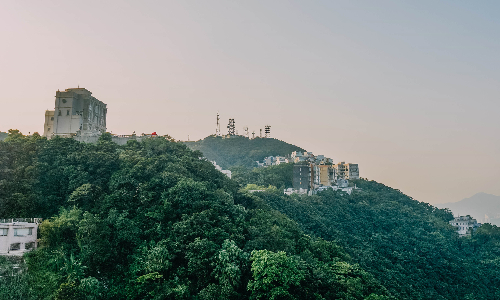

Today, your China escorted tour is coming to the end. You will have breakfast after getting up. Then, all you need to do is pack up your baggage. According to your flight information, your tour guide will pick you up in advance and then take you to the airport. Wish to see you again in China.
Editor: Deng Kaili
Proofreader: Summer Hou
| City | Five Star hotel list | Four Star hotel list |
|---|---|---|
| Shanghai | Ocean Hotel Shanghai | Courtyard by Marriott Shanghai Central |
| Xining | Sofitel Xining | Holiday Inn Xining Hot-Spring |
| Lhasa | Shangri-La Hotel Lhasa | Thangka hotel |
| Chengdu | Sofitel Chengdu Taihe | Holiday Inn Express Chengdu Jinniu |
| Guilin | Lijiang Waterfall Hotel | Guilin Bravo Hotel |
| Hong Kong | Harbour Grand Kowloon | Harbour Plaza North Point Hotel |
| Other Cities | Guest House | Guest House |
 |
![]() About your child or infant, please contact us for a discounted price.
About your child or infant, please contact us for a discounted price.



We started with a few days in Beijing & ended in Shanghai, from where we visited the Forbidden City and Great Wall. In between we visited Terra Cotta Warriors Museum, Panda Base, Shanghai Disneyland.

We had a wonderful holiday in China which will remain long in the memory. China is a breathtakingly beautiful country full of splendid temples and palaces, mountains and rivers, peaceful rural scenes and bustling shopping streets.
 QUICK ENQUIRY
QUICK ENQUIRY